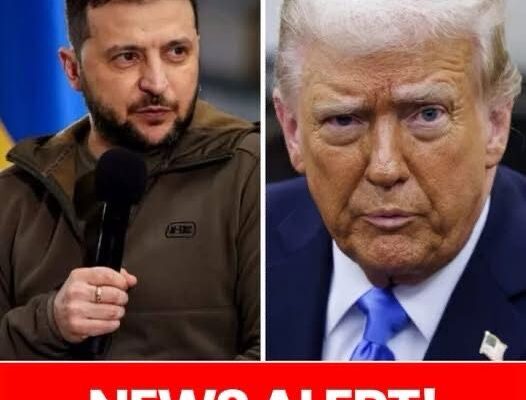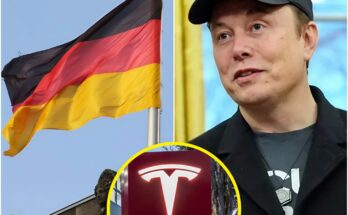In a tense and high‑stakes meeting that has since sent shockwaves through international political circles, former U.S. President Donald Trump and Ukrainian President Volodymyr Zelenskyy engaged in discussions that rapidly escalated into a public clash over the future of Ukraine. Although the meeting was intended to forge a path toward peace and to negotiate a critical minerals deal, it ended without any agreement, leaving both sides with nothing but stark warnings and heated words. Notably, Trump raised a dramatic alarm about the potential for global conflict—a warning that many fear could lead the world down the path toward World War III.
In the pages that follow, we will examine the background to this confrontation, the key moments of the exchange, and the strong reactions from political leaders and media outlets around the world. We will also consider the broader implications this clash may have on U.S.–Ukraine relations, global energy and security policy, and the future of diplomatic engagement in an increasingly polarized world.
I. A Meeting Born Out of Urgency
A. The Context of the Crisis
The meeting took place at a time when Ukraine is deeply embroiled in conflict. As the war continues to rage, the stakes for securing peace and stability have never been higher. With mounting pressure from both domestic audiences and international allies, Ukraine’s leadership has been forced to explore every possible avenue for ending the fighting. The White House meeting—set against the backdrop of the ongoing war—was arranged with this urgent need in mind. Key international figures, including French President Emmanuel Macron, who has long championed a united European response, played a critical role in persuading both Trump and Zelenskyy to come together, hoping that even a contentious dialogue might eventually lead to a breakthrough.
B. High‑Stakes Negotiations Amid Global Uncertainty
During the meeting, both leaders were under enormous pressure. Trump, known for his forceful style, sought to reassert American strength and control over the situation. Zelenskyy, on the other hand, entered the discussions burdened with the responsibility of protecting Ukrainian sovereignty and ensuring that any peace deal would not force his country to compromise its independence or territorial integrity. With Europe still reeling from the consequences of prolonged conflict, every word exchanged in the Oval Office carried weight, and the world watched with bated breath.
II. The Confrontation: Accusations and Denials
A. Trump’s Stark Warning
As the discussions unfolded, Trump’s rhetoric took a sharp turn. In a moment that would soon become widely publicized, he accused President Zelenskyy of putting the world at risk. “With us, you have the cards. You’re gambling with the lives of millions of people! You’re gambling with World War III! What you’re doing is very disrespectful to this country,” Trump declared. His forceful language was designed to underscore the gravity of the situation, implying that any unilateral moves by Ukraine could have disastrous global consequences. Trump’s comments suggested that if Ukraine did not align closely with American interests, the risks were enormous—a claim that has since sparked intense debate among experts and the public alike.
B. Zelenskyy’s Measured Rebuttal
Faced with Trump’s alarming accusations, President Zelenskyy responded in a manner that was both candid and defiant. He retorted, “I will wear a suit after this war is over. Maybe something like yours. Maybe better, maybe cheaper.” This brief yet loaded response carried multiple layers of meaning. On one level, Zelenskyy’s remark emphasized his focus on the war—indicating that formalities and personal image are secondary to the urgent need for national survival. On another level, his reference to Trump’s suit was a subtle, personal dig that challenged traditional expectations of formality in diplomacy.
Zelenskyy’s choice to wear his usual all‑black, military‑style attire during the meeting has become a symbol of his leadership during a time of crisis. For him, every decision—down to what he wears—reflects the dire priorities of his nation. By promising to don a suit only when the war is over, he made it clear that his immediate concern is defending his country, not conforming to Western norms of decorum.
C. The Diplomatic Fallout
The dramatic exchange left both leaders at an impasse. Trump’s insistence on using provocative language clashed with Zelenskyy’s resolute focus on the survival of Ukraine. The meeting ended without any deal being signed, leaving a bitter taste in the mouths of many international observers. The fallout from the encounter was swift, as media outlets around the world began dissecting every word and gesture. Critics argued that Trump’s hyperbolic warning risked escalating tensions unnecessarily, while supporters saw it as a bold assertion of American power.
III. Macron’s Diplomatic Influence
A. The Role of Emmanuel Macron
Amid the heated exchange, French President Emmanuel Macron emerged as a key figure behind the scenes. Macron has long been a strong advocate for increased Western support for Ukraine and has pushed for greater unity among European allies. Recognizing the urgency of the situation, Macron worked tirelessly to facilitate the meeting, urging Trump and Zelenskyy to come to the negotiating table. His involvement underscores the high stakes of the conflict and the deep desire among European leaders for a resolution.
Macron’s influence was evident in the framing of the meeting. He made it clear that Ukraine’s security was not solely America’s burden but a collective responsibility of the Western alliance. This perspective stood in stark contrast to Trump’s often isolationist rhetoric and further complicated the dynamics of the meeting. Macron’s diplomatic push was intended to help defuse the situation, but the public clash between Trump and Zelenskyy ultimately underscored the deep divisions in approach.
B. The Stalemate and Its Implications
The clash between Trump’s optimistic assertions and Zelenskyy’s firm stance resulted in a stalemate. The meeting ended without any concrete progress toward a peace deal, leaving both sides with unresolved tensions and lingering doubts about the future. This impasse has significant implications for international diplomacy. Without a clear path forward, the conflict in Ukraine remains mired in uncertainty, which could have ripple effects on global security and energy policies.
The lack of agreement also casts a shadow over the role of the United States in mediating international conflicts. Trump’s reluctance to fully engage with the complexities of the situation—and his focus on limiting U.S. involvement—has raised questions about America’s long‑term commitment to supporting Ukraine. Meanwhile, Zelenskyy’s unwavering demand for a peace deal that fully respects Ukraine’s rights reflects the deep challenges that Ukraine faces in securing its future amid external threats.
V. Trump’s Stark Warning: The Specter of Global Conflict
A. Warning of Catastrophic Consequences
Perhaps the most dramatic moment of the meeting came when Trump issued a dire warning about the potential for global conflict. With an unmistakable tone of both bravado and concern, he warned that if tensions in Ukraine were not managed properly, the world could be hurtling toward World War III. This hyperbolic statement struck a chord with audiences, both domestically and internationally. While some critics dismissed it as reckless rhetoric, others viewed it as a genuine warning of the high stakes involved.
Trump’s warning was not limited to Ukraine; it was a broader critique of the current international order and a call to reexamine the role of Western alliances in maintaining global security. By invoking the specter of World War III, Trump sought to underline the risks of unchecked conflict and to position himself as a potential savior who could restore order through decisive action.
B. The Fallout of Hyperbolic Rhetoric
The dramatic nature of Trump’s warning has far‑reaching implications. On one hand, his words may serve as a wake‑up call, galvanizing international leaders to take the threat of global conflict more seriously. On the other hand, such hyperbolic language can also inflame tensions, particularly if it is interpreted as a direct challenge to established allies and adversaries alike. Critics have argued that statements like these can undermine diplomatic efforts and make it harder to achieve a peaceful resolution to the conflict in Ukraine.
The reaction from the international community has been mixed. While some observers appreciate the urgency conveyed by Trump’s remarks, many others worry that the provocative language could further polarize an already divided geopolitical landscape. The long‑term consequences of such rhetoric remain to be seen, but there is little doubt that it has intensified the debate over the future direction of U.S. foreign policy and its role in global security.
VI. Political Reactions and International Ramifications
A. Domestic Reactions in the U.S.
Within the United States, the fallout from the meeting has been intense. Political analysts, lawmakers, and media commentators have debated whether Trump’s outspoken approach represents a shift toward a more isolationist U.S. foreign policy. Some Republicans argue that his tough talk is a necessary corrective that will force Ukraine and other allies to reassess their positions. Others fear that it could signal a retreat from American leadership in international conflicts, weakening U.S. influence in regions critical to global stability.
The divided responses reflect broader partisan differences. Supporters of Trump’s approach insist that a firm stance is needed to deter aggression and ensure that U.S. interests are protected. In contrast, critics argue that diplomacy requires nuance and cooperation, especially when dealing with complex conflicts like the one in Ukraine.
B. International Perspectives: Allies and Adversaries
Internationally, the meeting has sparked a variety of reactions. European leaders, who have been working to support Ukraine while managing their own security concerns, are watching the developments with a mix of concern and cautious optimism. For many European diplomats, the absence of a clear, united strategy from the United States could complicate efforts to build a cohesive response to Russian aggression.
C. The Role of Mediation in a Divided World
Macron’s role in facilitating the meeting between Trump and Zelenskyy is a reminder that mediation remains a crucial tool in resolving international conflicts. His insistence on bringing the two leaders together—despite their obvious differences—underscores the need for dialogue, even when emotions run high and positions are deeply entrenched. Macron’s intervention represents a broader effort by European leaders to foster unity within the Western alliance, highlighting that despite internal disagreements, collective action remains essential in the face of external threats.
As global challenges become increasingly complex, the need for effective mediation and multilateral cooperation grows ever more important. The current episode serves as a case study in the difficulties of reconciling divergent views in a rapidly changing geopolitical landscape. It also suggests that future diplomatic engagements will require leaders who are not only skilled in negotiation but who are also capable of adapting to new realities without losing sight of core principles.


